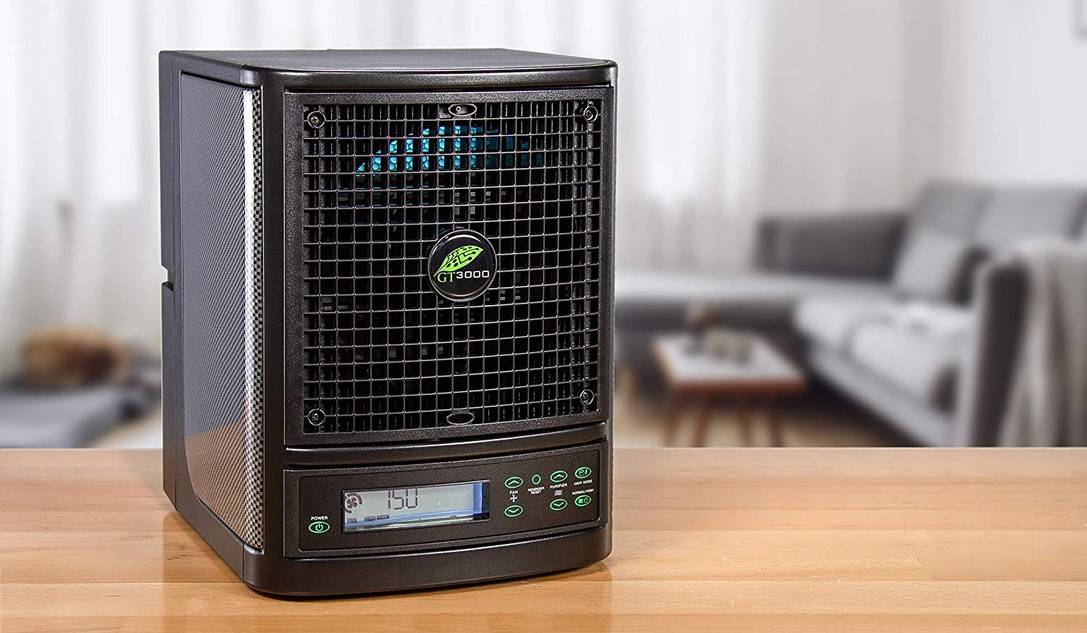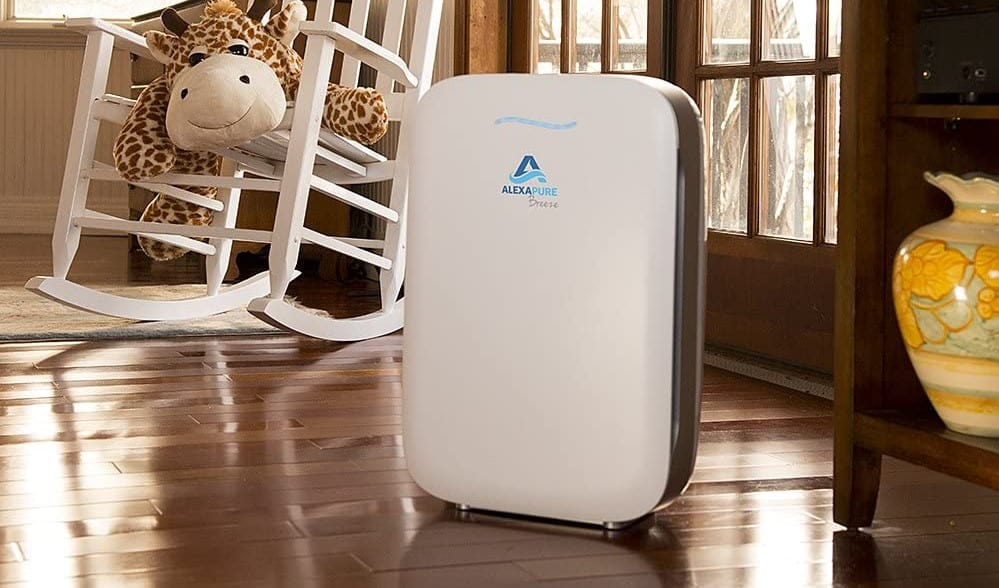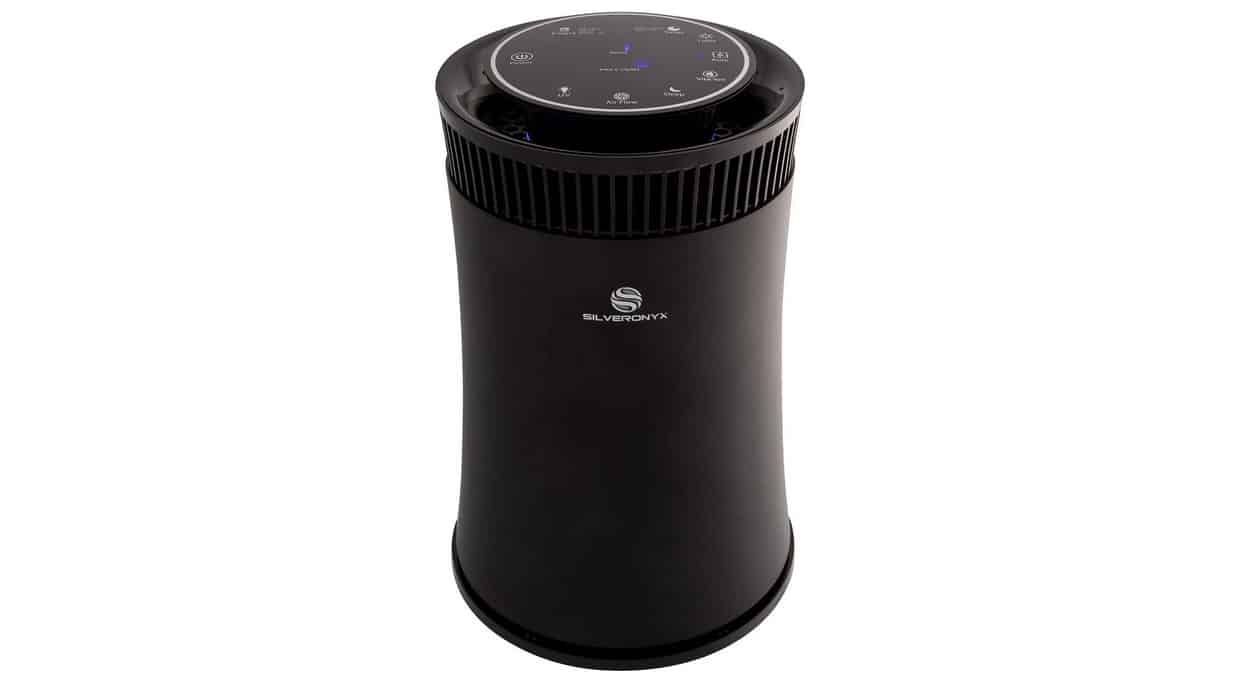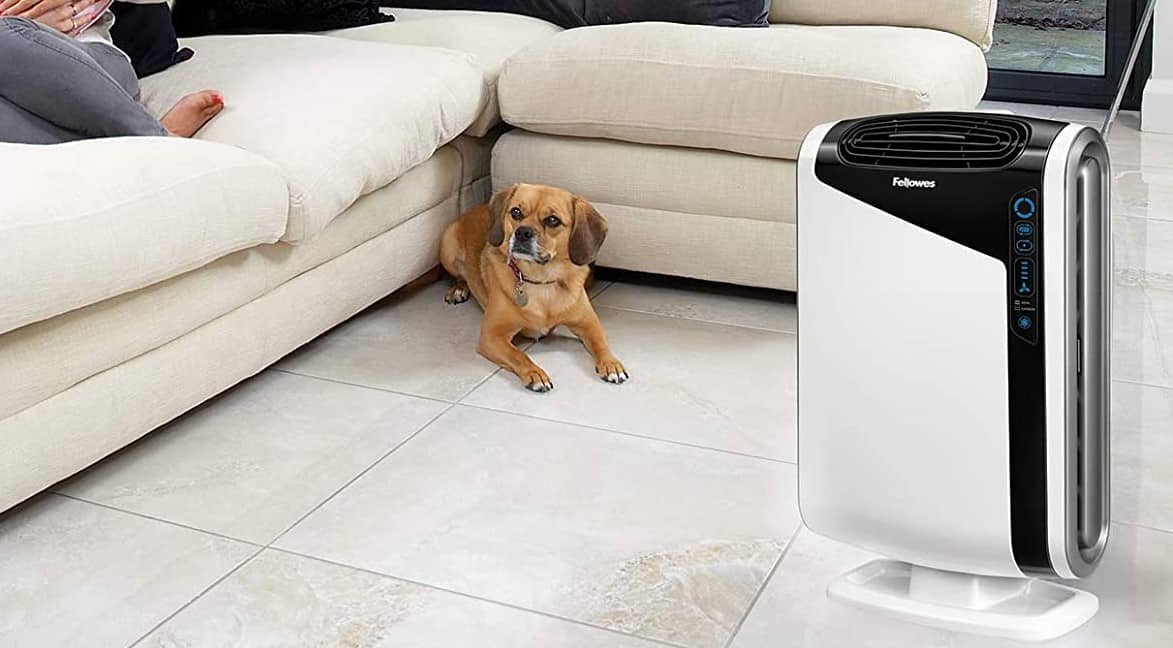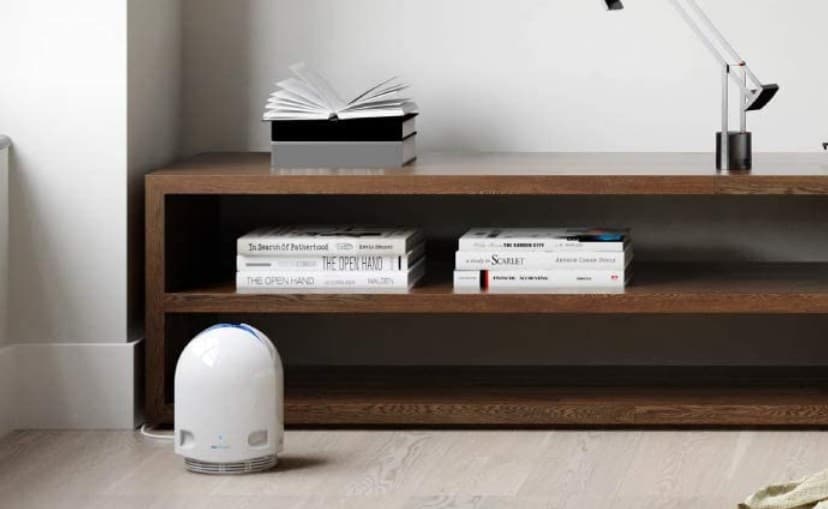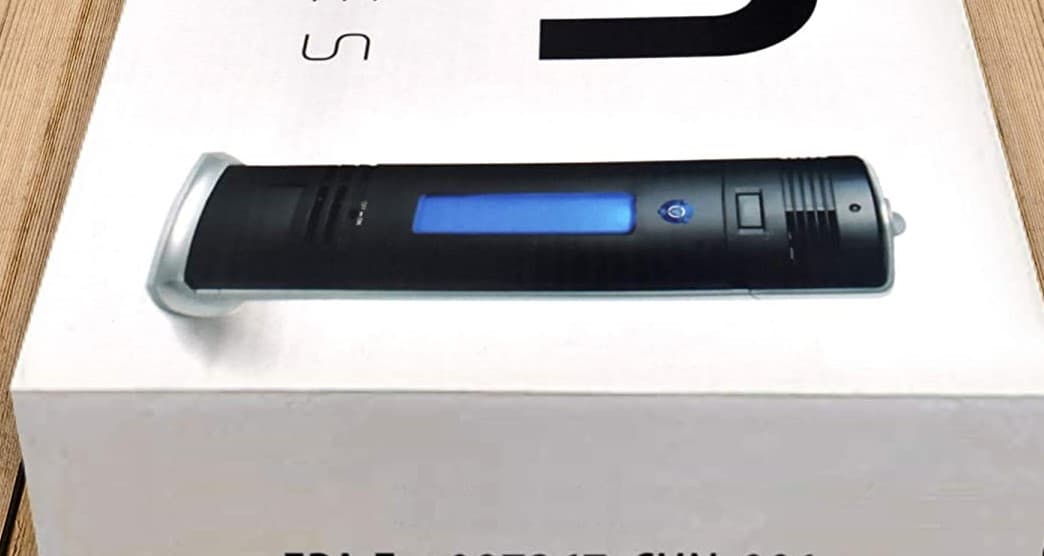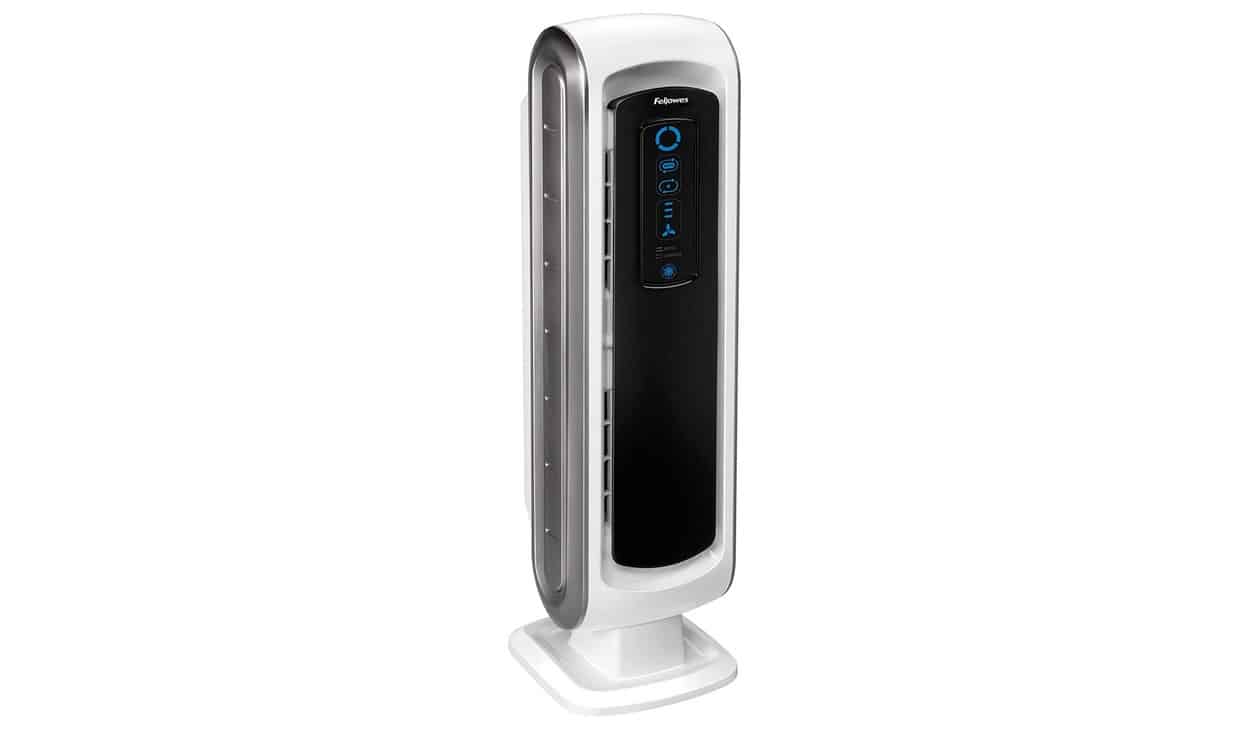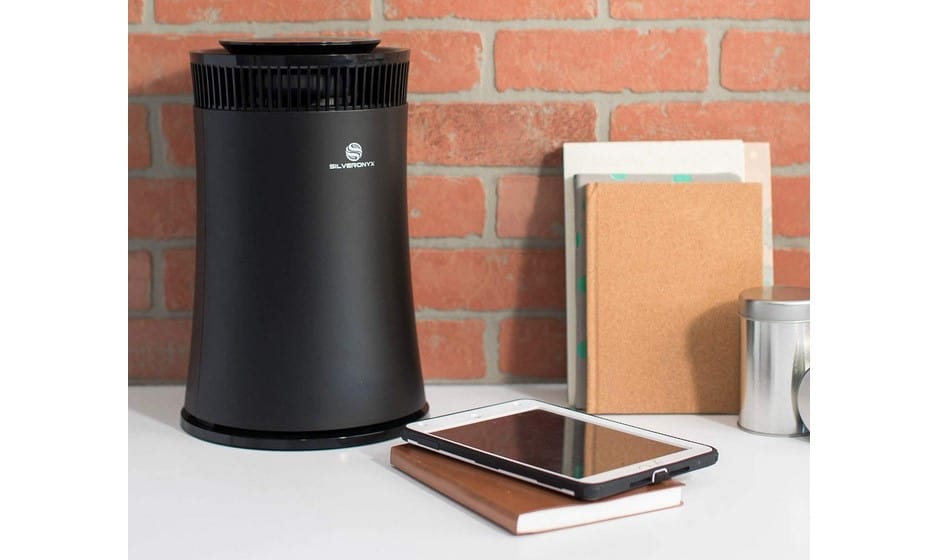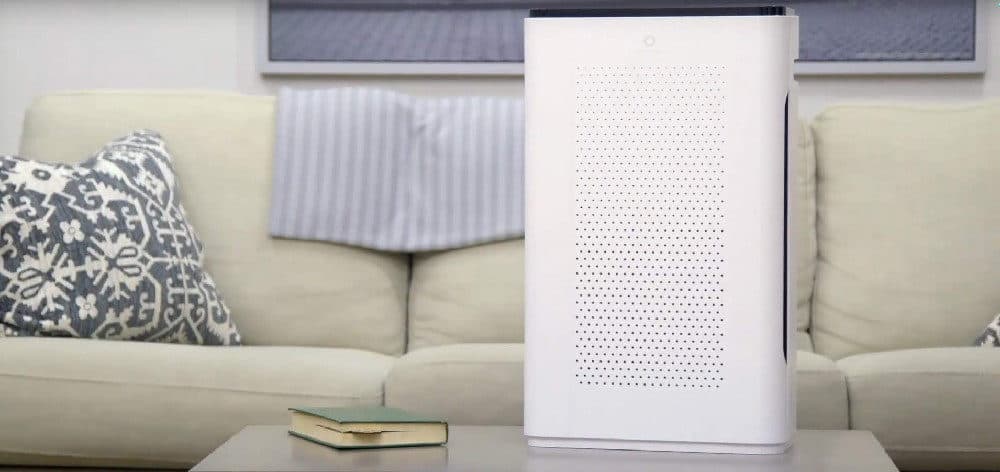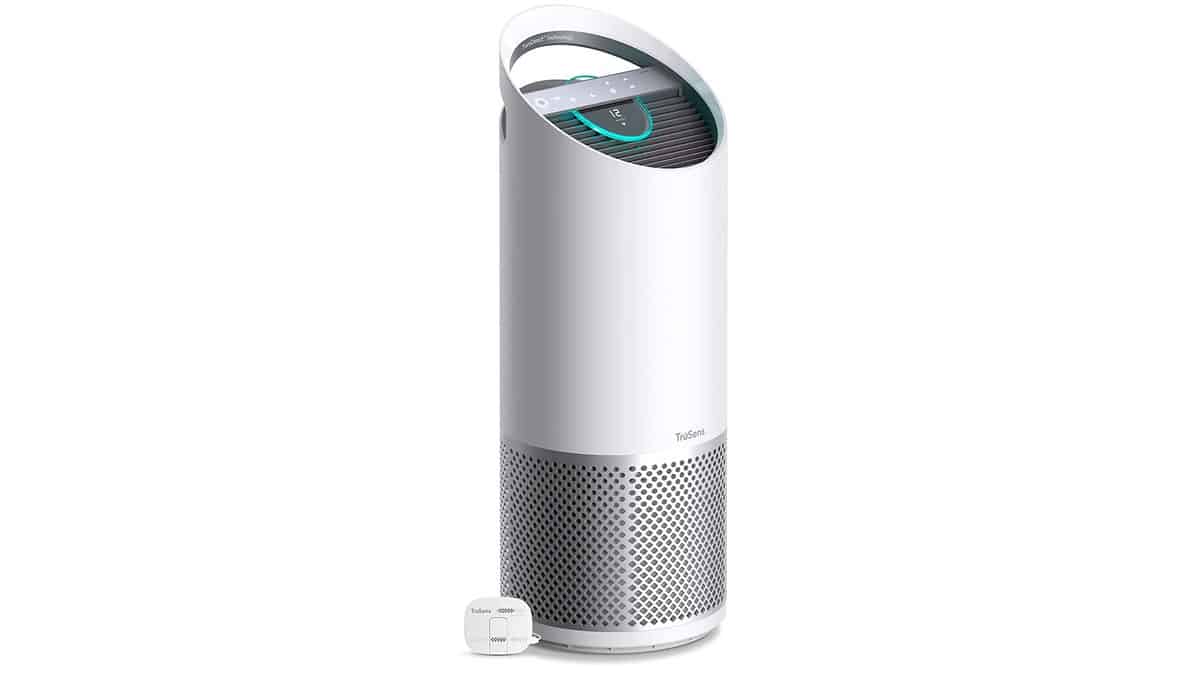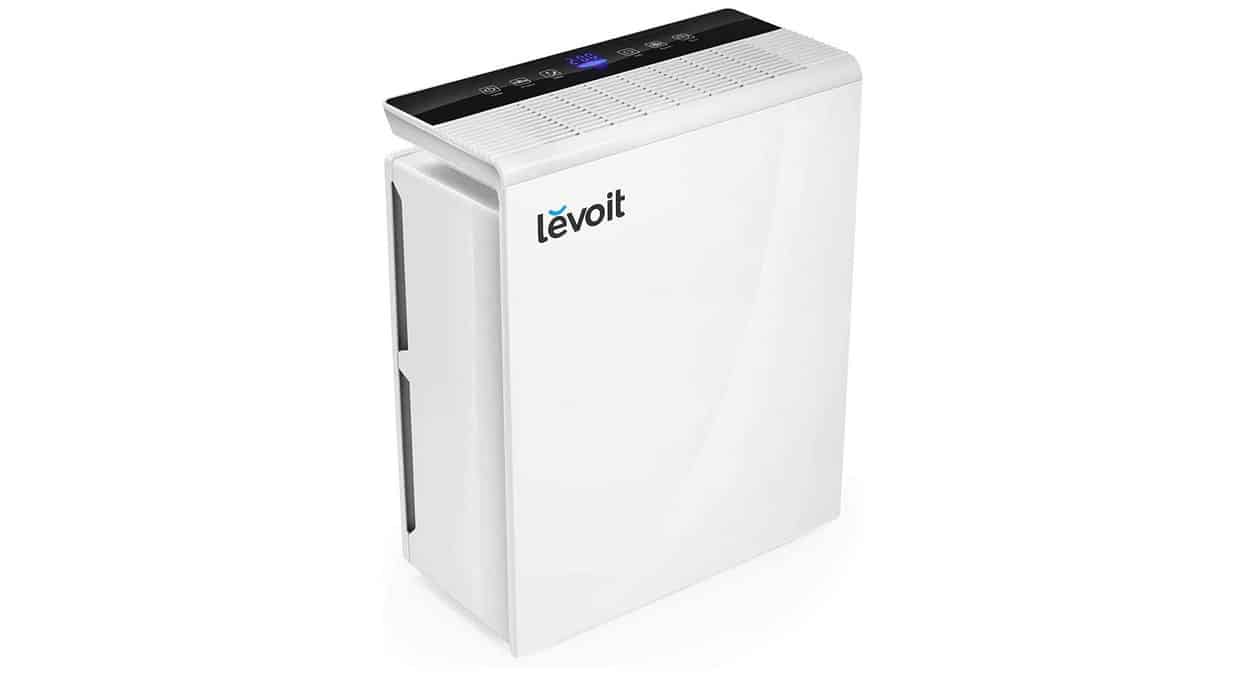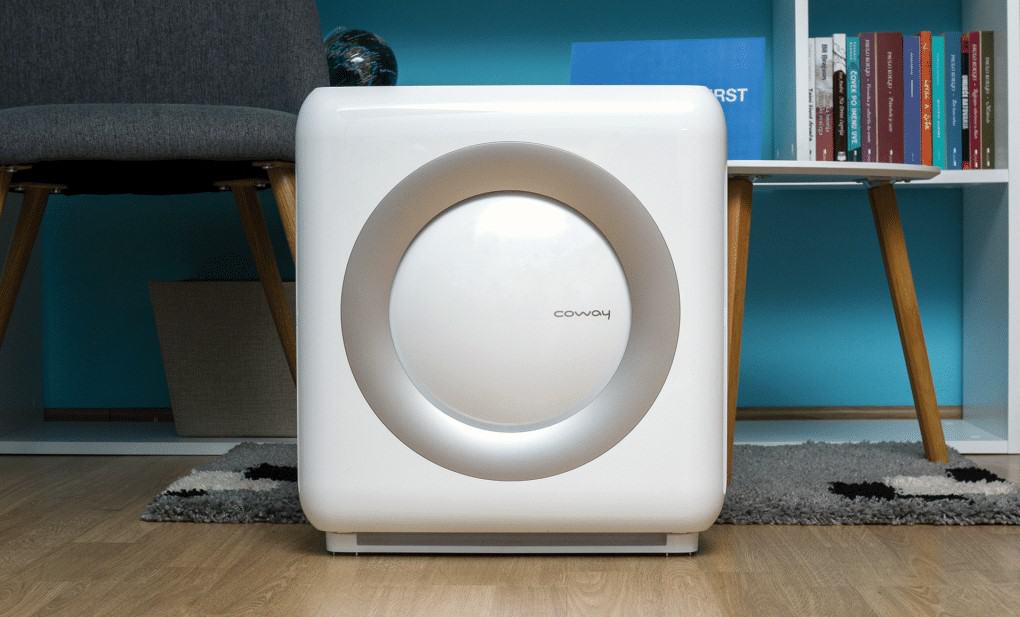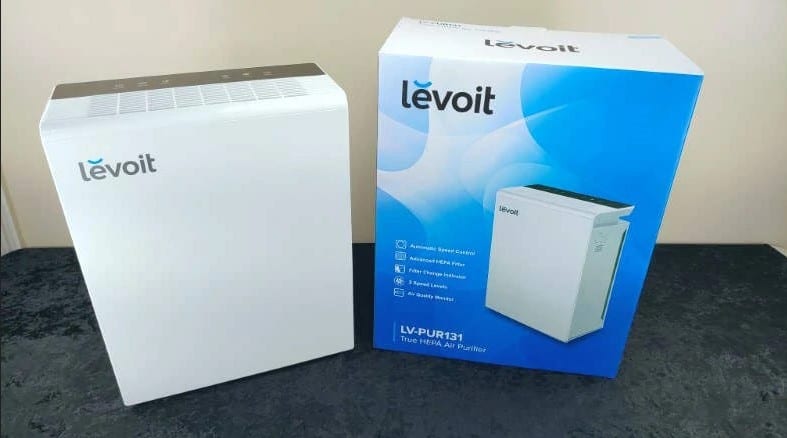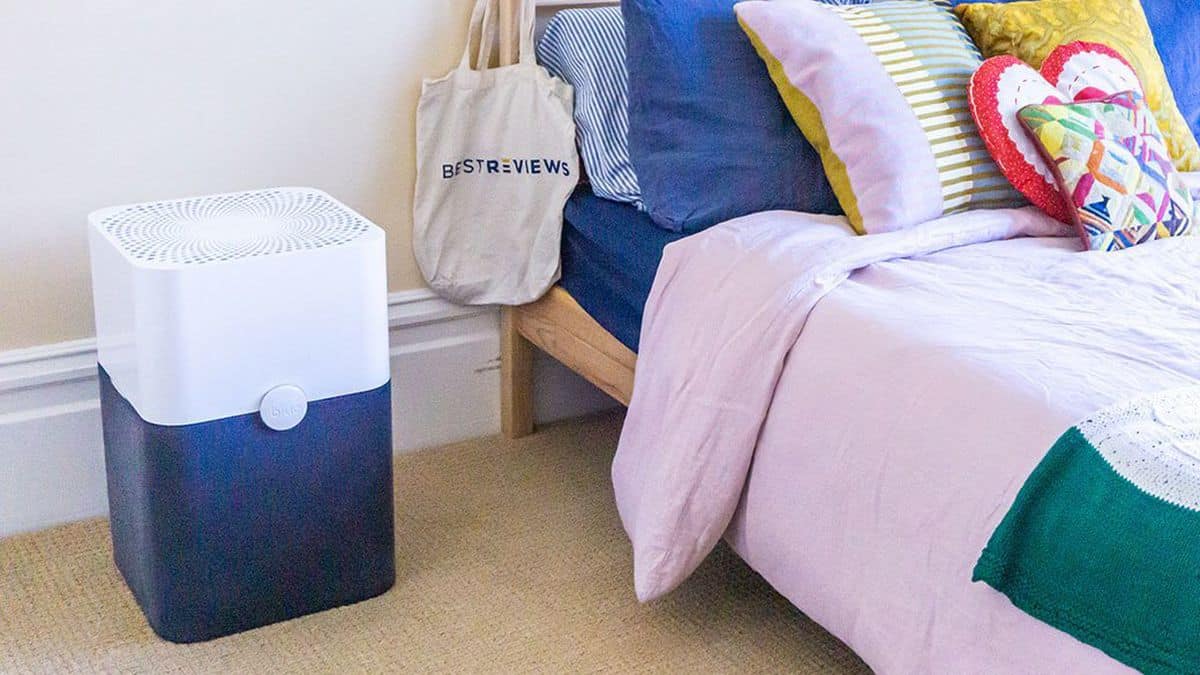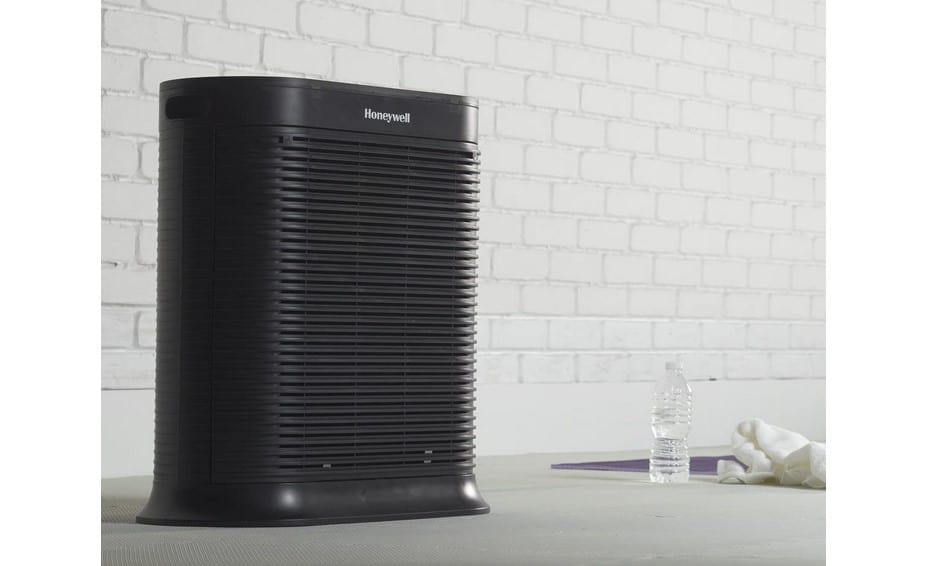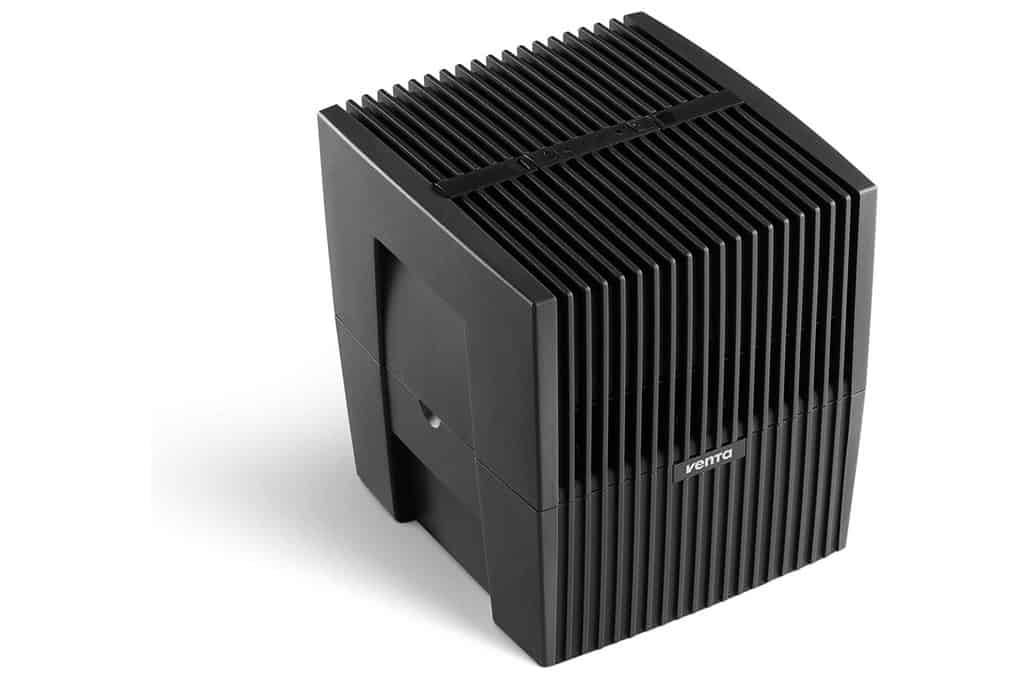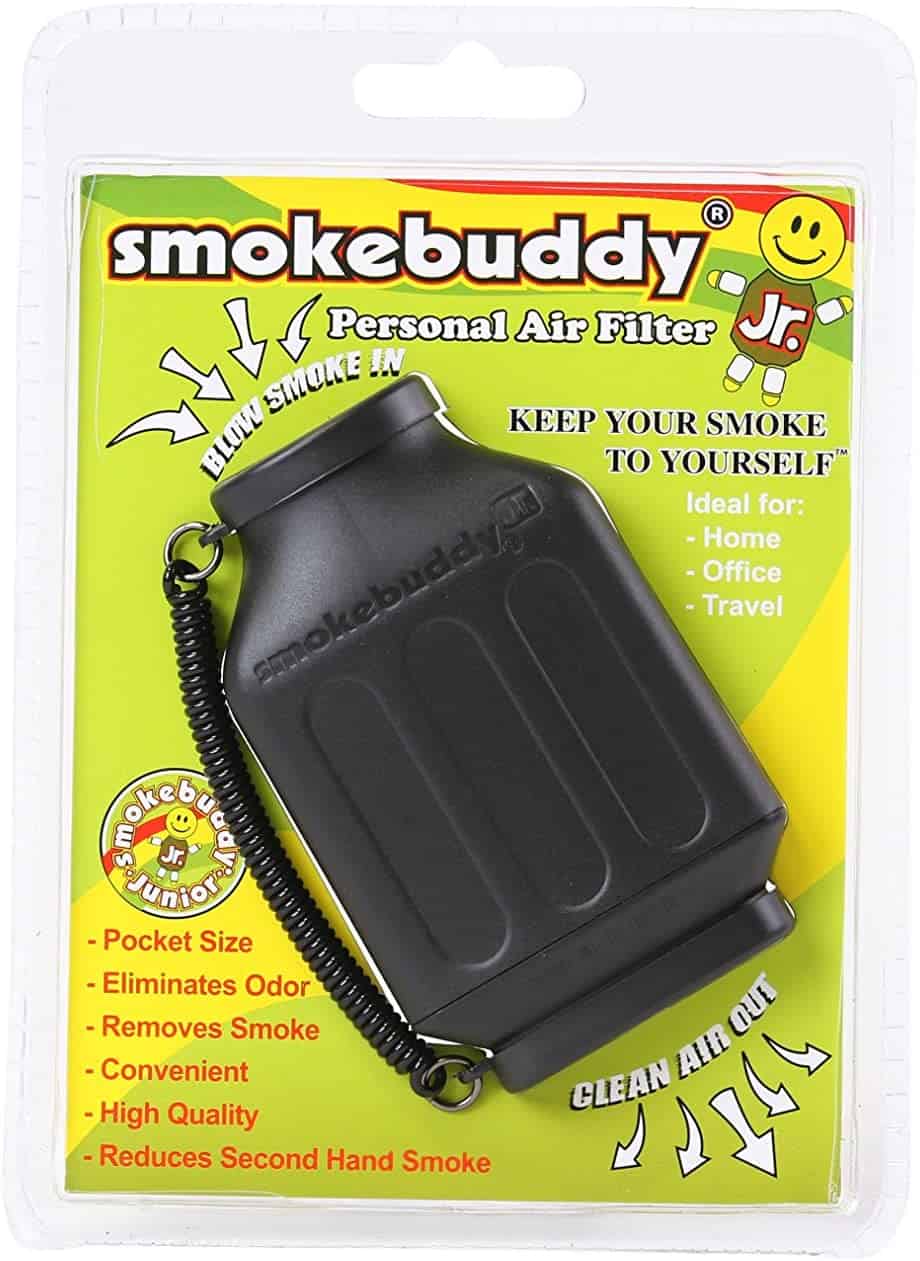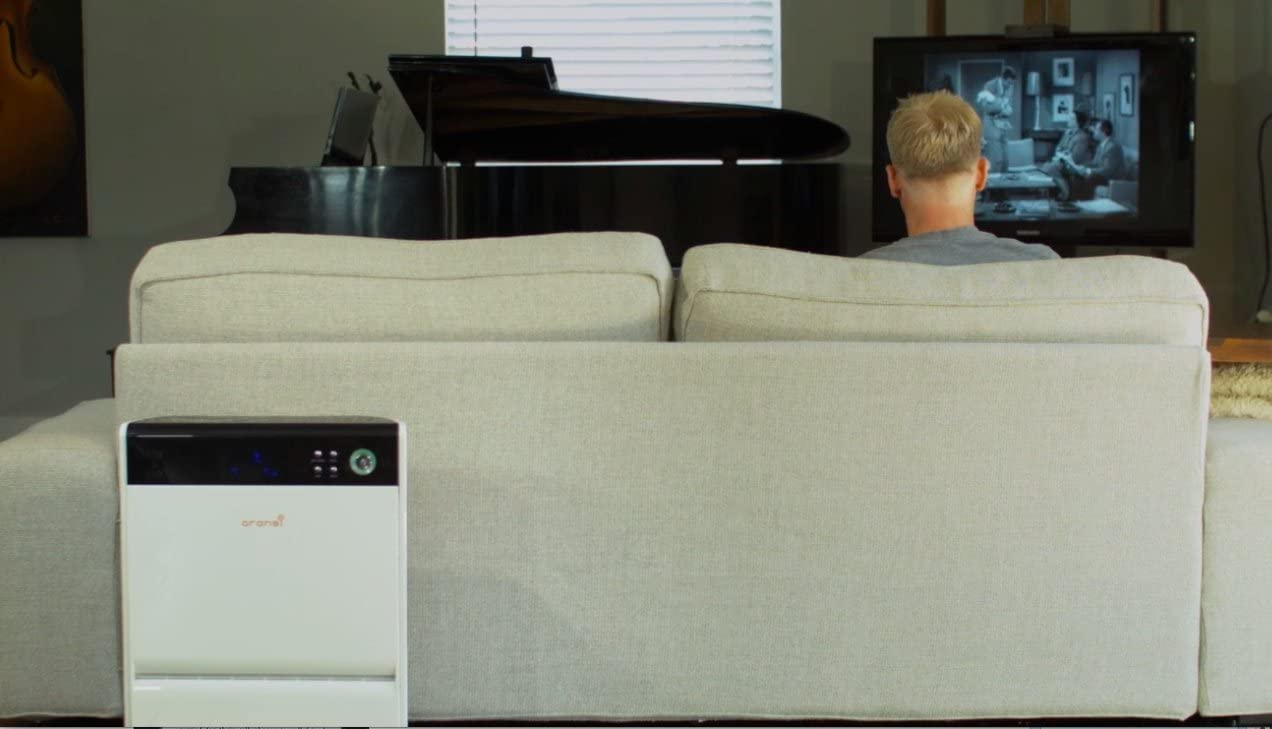Ever wonder if odors in the air are actually particles floating around and up your nose? Well, they are, of course, they are. Volatile Organic Compounds, or VOCs, are organic emissions from products we use every day. Some have distinct odors, or aren’t concentrated enough for the average nose to detect, and others are completely odorless. Some like cigar smoke is obvious and the Oransi Erik Multi-Carbon – Best Air Purifier for Cigar Smoke can help.
Something as simple as cleaning your kitchen counter with a chemical cleaner releases VOCs into your home’s air, and a high level of VOCs could mean serious health threats to you and your family. Using an indoor air quality meter, or VOC meter can help ensure you maintain a safe environment at home. Other elements that help are HEPA filters, cleaning your air purifier filter, and knowing how a bipolar air purifier works.
VOCs Explained
Volatile Organic Compounds are used in the manufacturing processes of most consumer chemical products, but what are VOCs? Well for starters, that daisy-fresh scented laundry detergent your mom loves so much contains VOCs, as do paint, cleaners, detergents, polishes, makeup, automotive liquids, pesticides….nearly everything that’s bottled for household use can potentially contain VOCs.
But wait, there’s more, Johnny! Printing, dry-cleaning, permanent markers, crafting, remodeling, and – heck – even some furniture can emit VOCs.
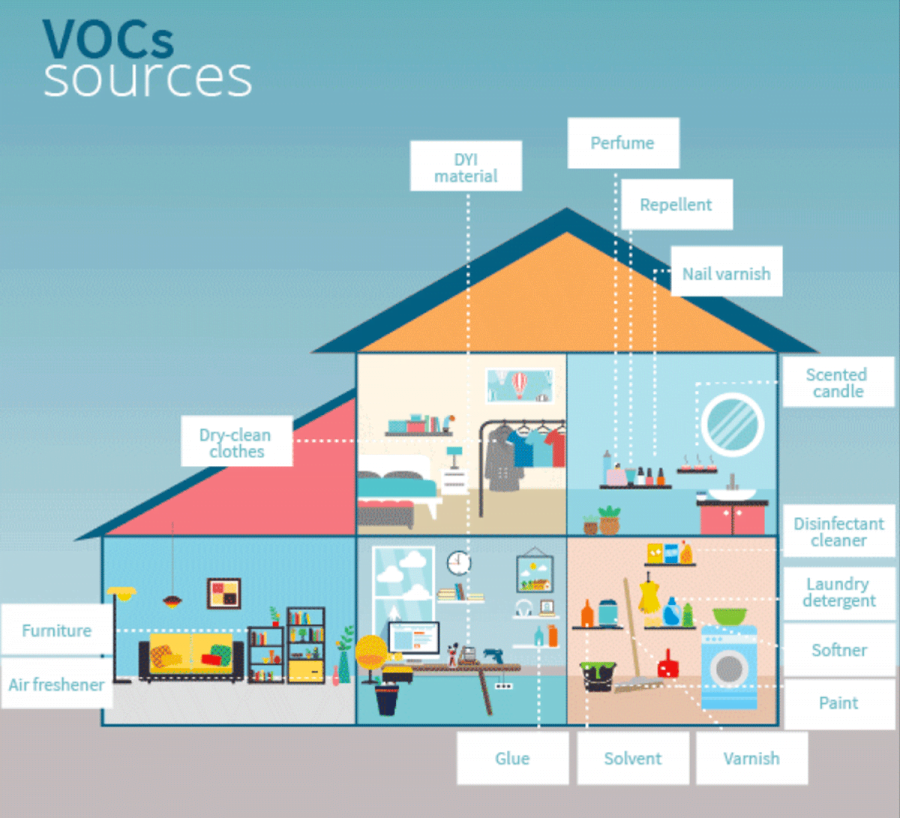
So what’s the risk? I mean if everybody’s doing it…
Well, everyone has VOCs in their home, but they may not be inhaling furniture polish in the pantry like you.
Banter aside, health risks are substantial when VOC levels of certain pollutants exceed healthy limits. The EPA estimates that homes contain an average of two-to-five times as many VOCs as outdoor environments, and homeowners often expose themselves to unsafe containment levels when performing daily tasks without even realizing it.
Another issue is that while elevated concentrations will eventually dissipate over time, many homes and buildings lack adequate ventilation to disperse the fumes effectively, resulting in emitted VOCs lingering much longer, and increasing exposure and health risks. There’s a commonly uttered phrase in the HVAC industry, called sick building syndrome, used to describe an office environment in which workers are ill or call in sick more frequently than management expects, almost always caused by – you guessed it – poor ventilation which inhibits pollutant filtration, leading to prolonged exposure to VOCs.
VOCs can cause all kinds of nasty health effects, including but not limited to:
- Headaches
- Irritation to eyes, nose, and throat
- Skin reactions
- Nausea
- Fatigue
- Dizziness
- Liver damage
- Kidney damage
- Cancer
So what’s the first step in eliminating VOCs? Measurement. You must first understand your level of exposure before you can improve indoor air quality with a Dyson Pure Cool Link. To do this, you can either purchase a VOC meter, or look for VOC meter rental services to take readings in your building of choice.
Using a great air purifier that’s designed for indoors to adsorb VOCs can help filter out many of the harmful pollutants that would otherwise linger in your air. Another good practice is to ensure that your home is well-ventilated. Open windows and doors to air out tight spaces as an immediate solution, and keep temperature and humidity regulated to ensure VOC off-gas isn’t released through chemical reactions caused by rising temperatures.
How Do VOC Meters Work?
So what is a VOC monitor? Photo-Ionization Detection (PID) is the most commonly used technology to calculate VOC content in the air. Sound like gibberish? Let me break it down for you:
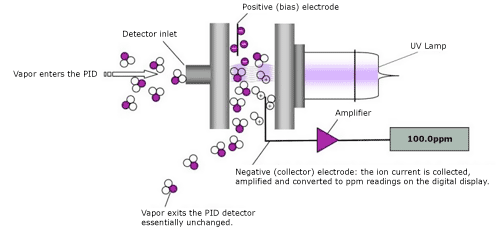
When air enters the end of a VOC meter, a UV light interacts with the molecules in the air. Organic compounds release positively charged ions when they pass through the light, which is then captured by a negatively charged plate producing a measurable electrical current. The current is measured by the PID device, which is then used by the VOC sensor to determine the type and quantity of the detected VOCs. The higher the electrical current, the more pollutants in the air, and the UV lamp used by the manufacturer of the VOC meter determine what contaminants can be detected by the VOC sensor.
Who Uses VOC Meters?
What is VOC monitoring? VOC meters are used by a wide variety of people for both personal and professional purposes. HVAC and indoor air quality experts routinely use VOC monitors to detect pollutant concentrations in buildings, using that information to develop an air quality plan for customers. Typically, professionals will examine environments for VOC sources to see if a root cause of pollution can be minimized, or eliminated. Afterward, the contractor will follow up with routine inspections to report any progress back to the customer.
Individuals can also use VOC meters to measure pollutants in their homes. People with allergies, constant headaches, sinus irritation, asthma, or any breathing disabilities can greatly benefit from routine VOC measurements.
What Are Average VOC Levels in Households?
Using a VOC tester is only part of the battle, though. What you really need to know is how to read its findings. VOC measurements will typically be displayed in parts per million (ppm), or parts per billion (ppb).
While a reading of complex compounds from multiple VOCs is common, and obtaining a definitive answer regarding “average” indoor VOC levels is difficult (if not impossible), there are some simple rules to adhere to to ensure that you’re doing your part to reduce volatile pollutants in your home. Generally speaking, VOC readings less than 1,000 ppb (1.0 ppm) shouldn’t cause adverse health effects. Prolonged exposure to contaminants between 1,000 and 10,000 ppb can cause mild health issues, and exposure to pollutants exceeding 10,000 ppb may produce significant issues with continued exposure.
But keep in mind these are just simple guidelines, without analyzing the specific VOCs in your environment it’s difficult to say how you could react. Detailed VOC analysis is a service that’s available if you’re interested (check with local HVAC companies), but it’s usually costly and inconvenient.
Using a handheld VOC meter can be just as effective at determining levels of pollutants in your home. Understand though that consumer-grade VOC meters will test for what’s called the TVOC, or the Total VOC, to give testers an overall indication of the environment’s condition – as opposed to identifying individual VOC levels. That said, this should be more than sufficient for most consumers out there.
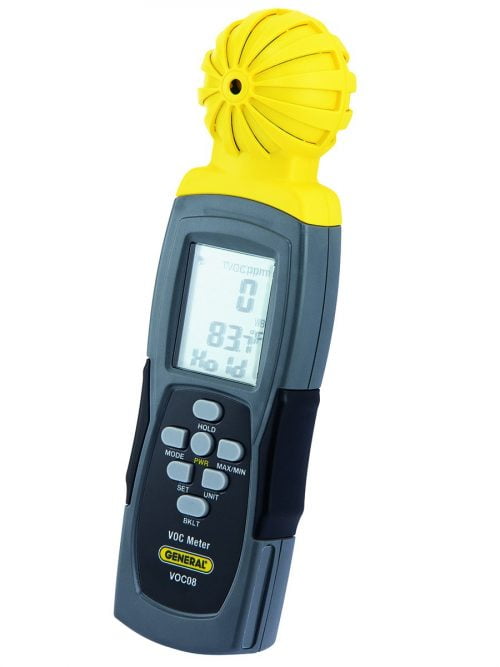
How Can I Reduce VOC Levels at Home?
The first step to improving your air quality is to use VOC monitoring instruments, like an indoor air quality monitor or VOC meter, to determine how polluted your indoor air is. You can purchase a VOC meter on Amazon. Once you’ve measured, there are several options to consider which can improve your indoor air.
Introducing an air purifier, or what industry professionals refer to as an air “scrubber”, can help filter out harmful VOCs, pollen, dust, and smoke. Just make sure you purchase the right air cleaner, some aren’t designed to remove VOCs from the air at all.
Also, improving your home’s ventilation and HVAC ductwork can benefit air quality dramatically. Regular air exchanges with outside air are recommended to keep things fresh, but depending on your geographical location outside air changes may not be a healthy option – after all, outdoor air pollution is a problem too – so make sure to obtain outdoor air quality reports before implementing an environmental control solution that exchanges untreated air from outside.
A quick and easy solution to reduce VOCs is to air things out by opening windows and doors. We recommend only doing this if something is particularly irritating, as humidity and temperature control will be compromised and both of those factors can help to minimize VOC reactions overall.
What’s the Difference Between an Indoor Air Quality Monitor and a VOC Meter?
Indoor air quality monitors measure particulate matter below a certain micron in size (usually 2.5, aka PM2.5), in addition to testing for VOCs, and tracking temperature and humidity – some even act as CO and CO2 detectors too.
Many “smart” options are available for the consumer, including a few that send indoor air quality reports via smartphone daily, and connect to “smart” thermostats to help regulate air quality based on user preferences. Comparatively, VOC meters only measure VOC content. We can’t speak to the effectiveness of VOC detection within air quality monitors, but a well-made VOC detector should accurately report the TVOC without issue.
Should You Buy an Indoor Air Quality Monitor, or VOC Meter?
It boils down to your distinct needs. If you’re in search of a package unit that tracks many different indoor quality variables at once, then an indoor air quality monitor may be for you – maybe you want your Nest Thermostat to do more than just regulate the temperature.
On the other hand, VOC meters are useful instruments for those that need to measure for health irritants, or potentially reactive elements. If you, or a family member, suffers from allergies or regular discomfort while at home, testing your air’s VOC content may be a good idea.
VOC meter price varies widely based on type, but an average consumer version can be had for between $100 and $400. Industrial and scientific models start at about $800 and go up from there.
Related Articles:

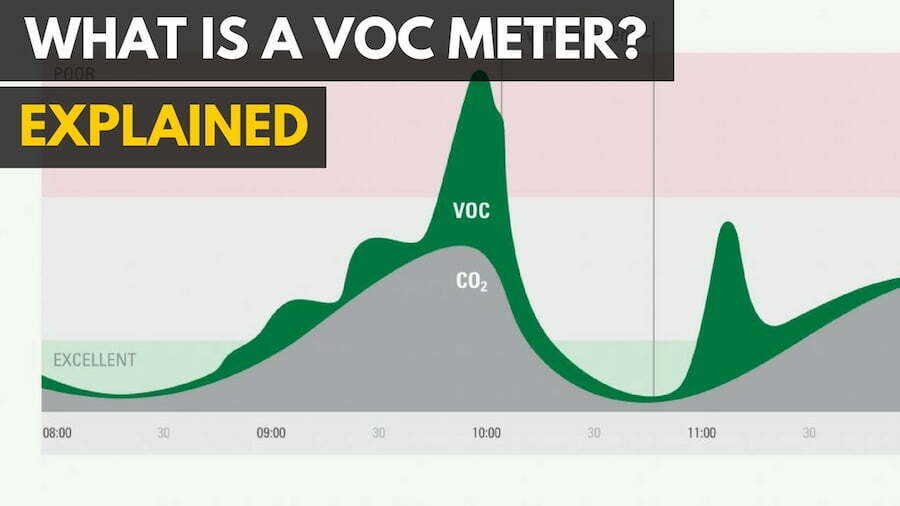













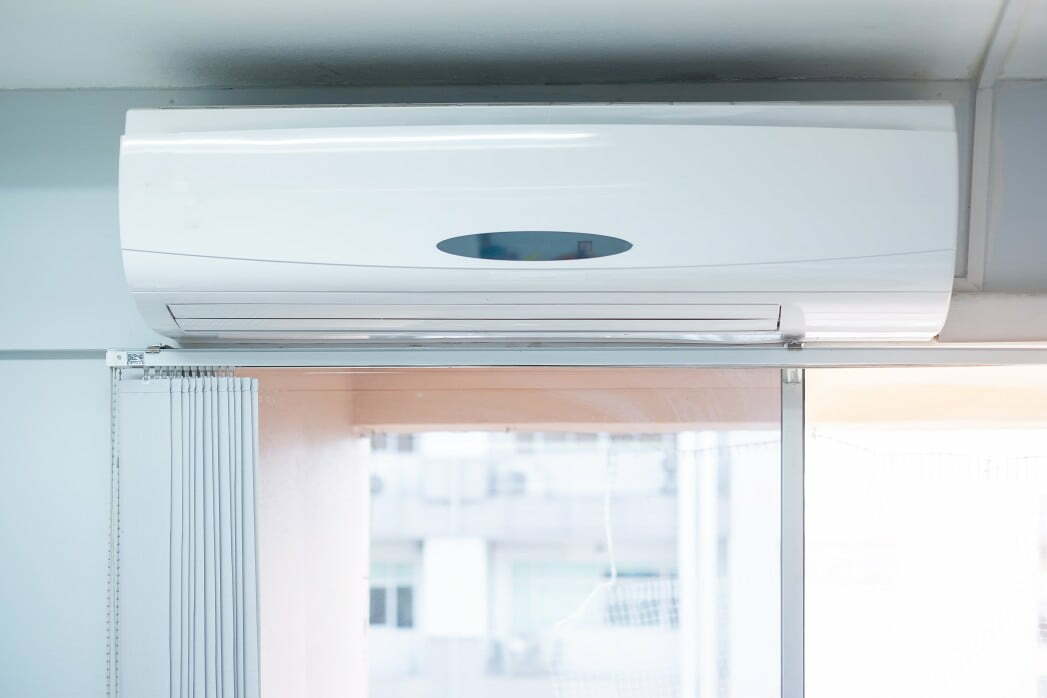

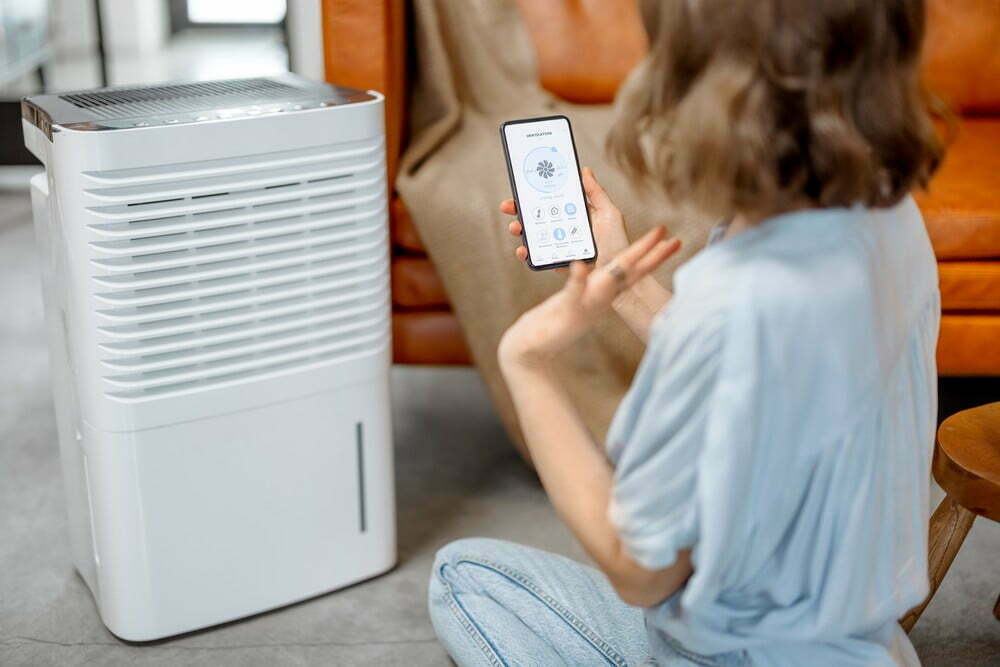
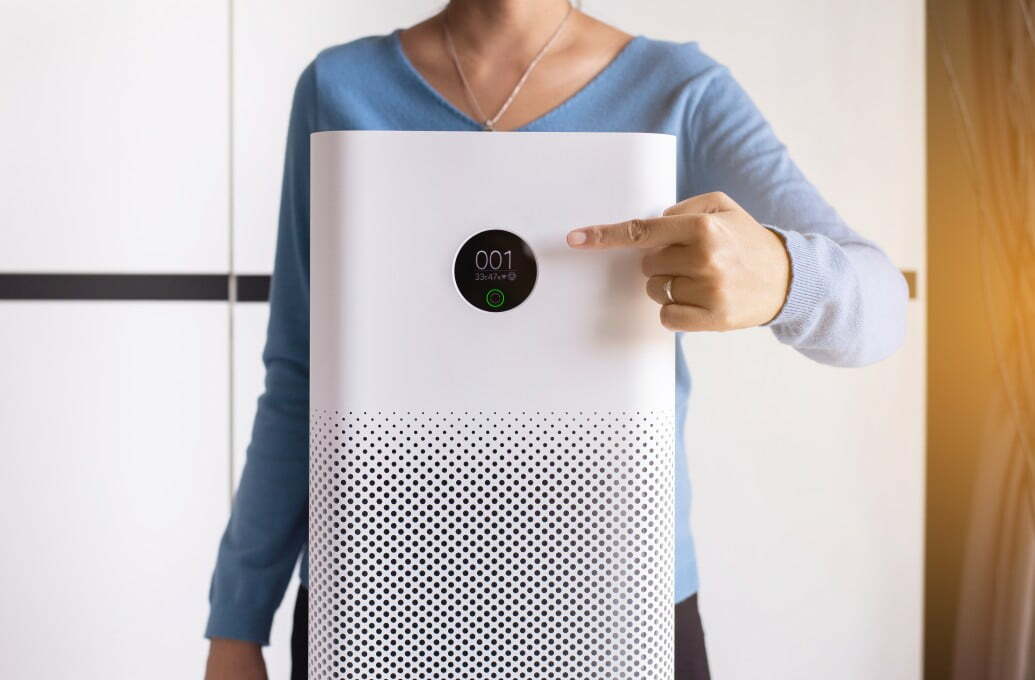
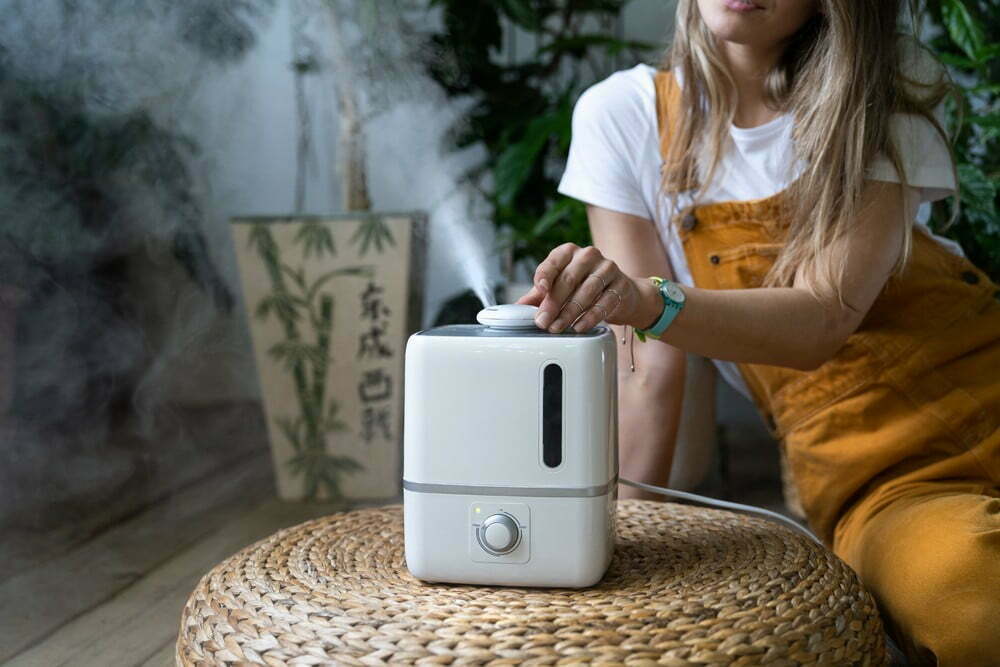


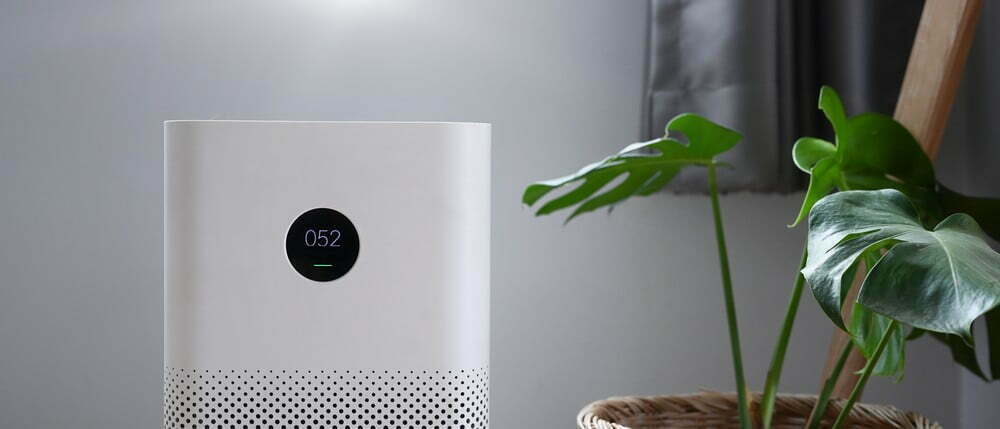
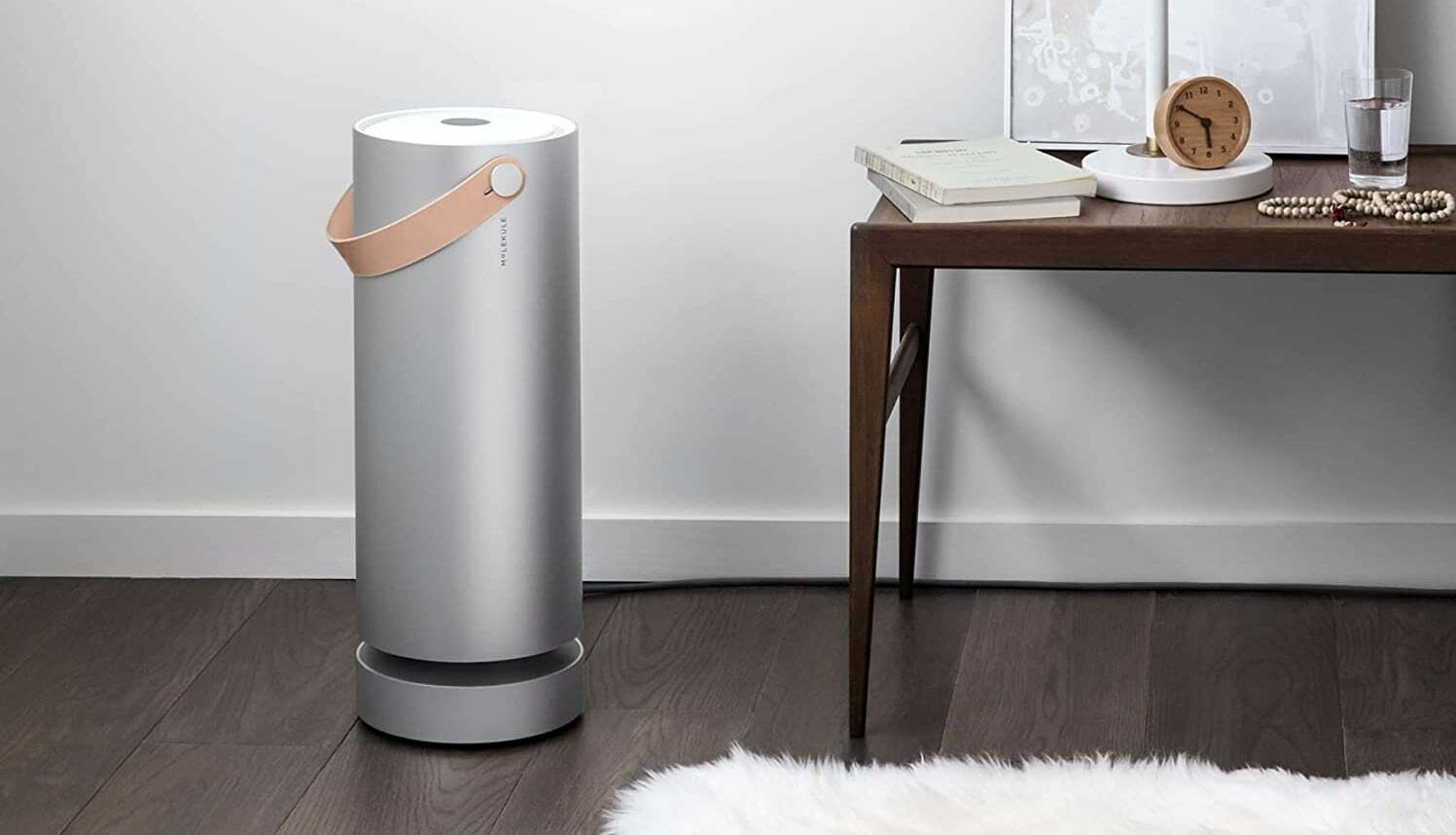
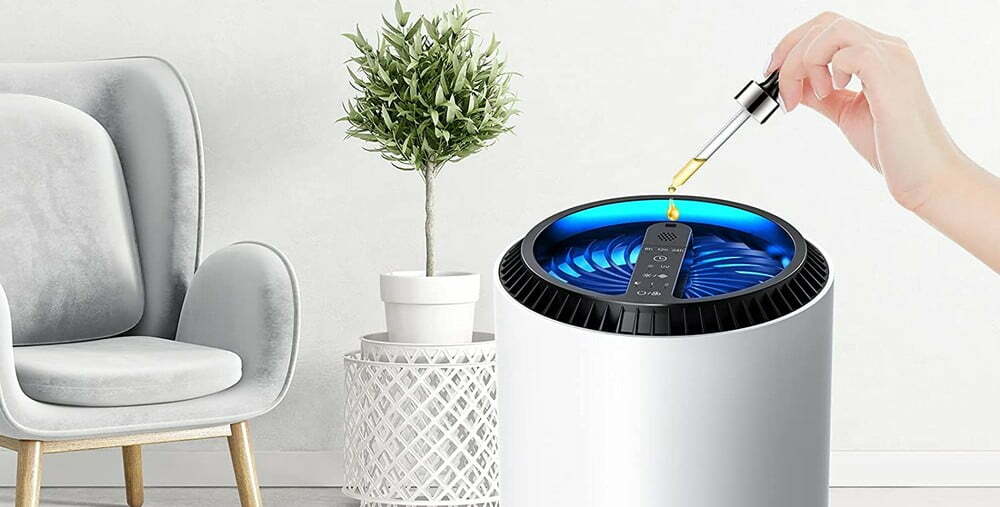
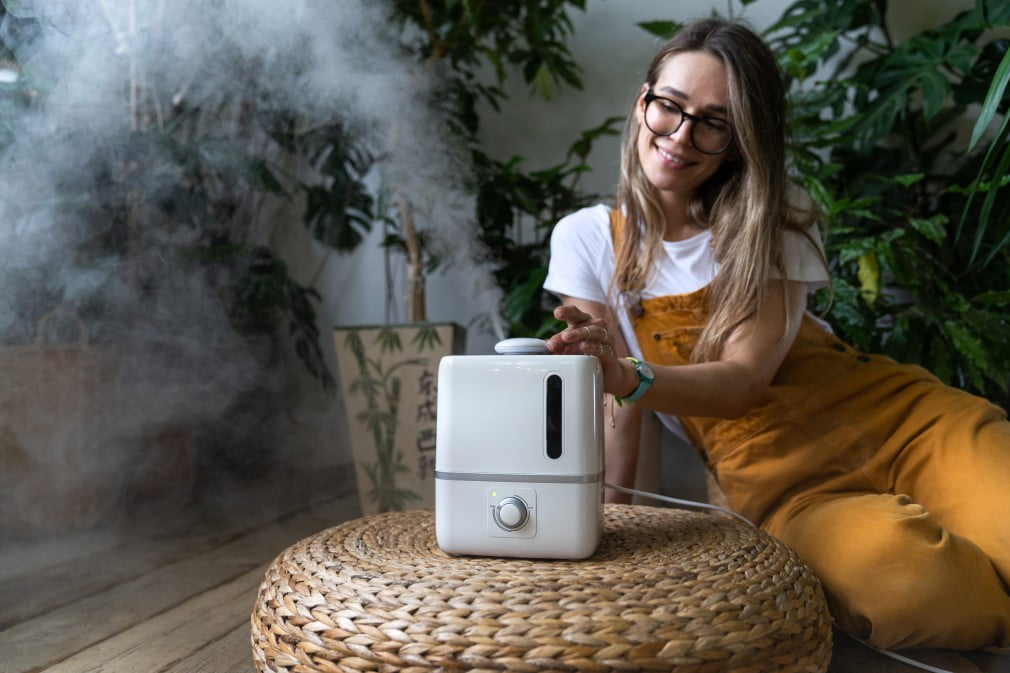
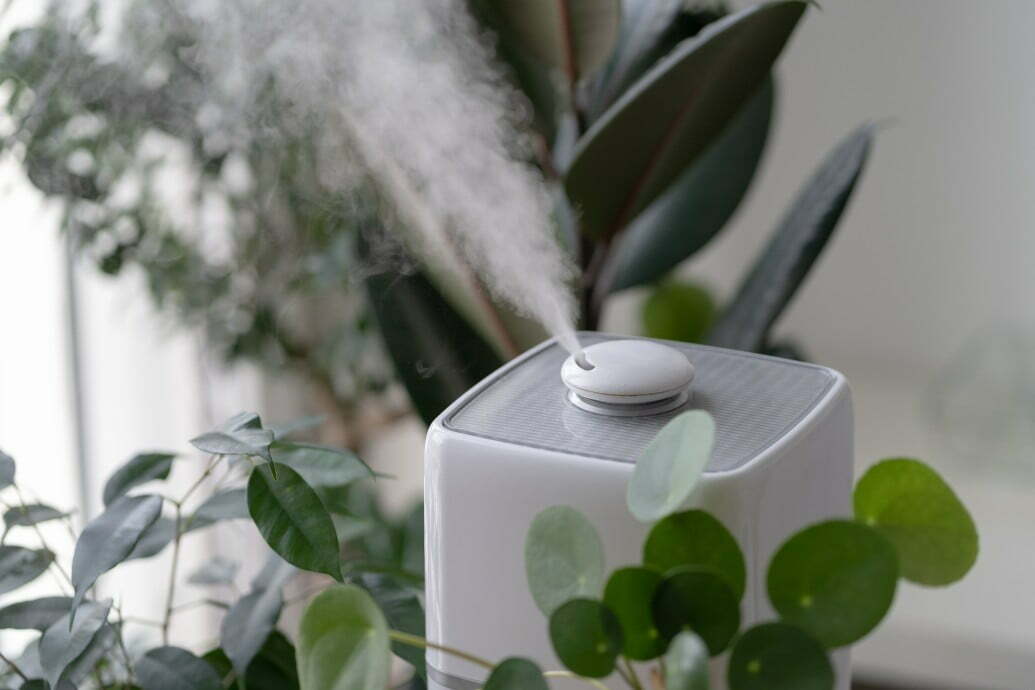

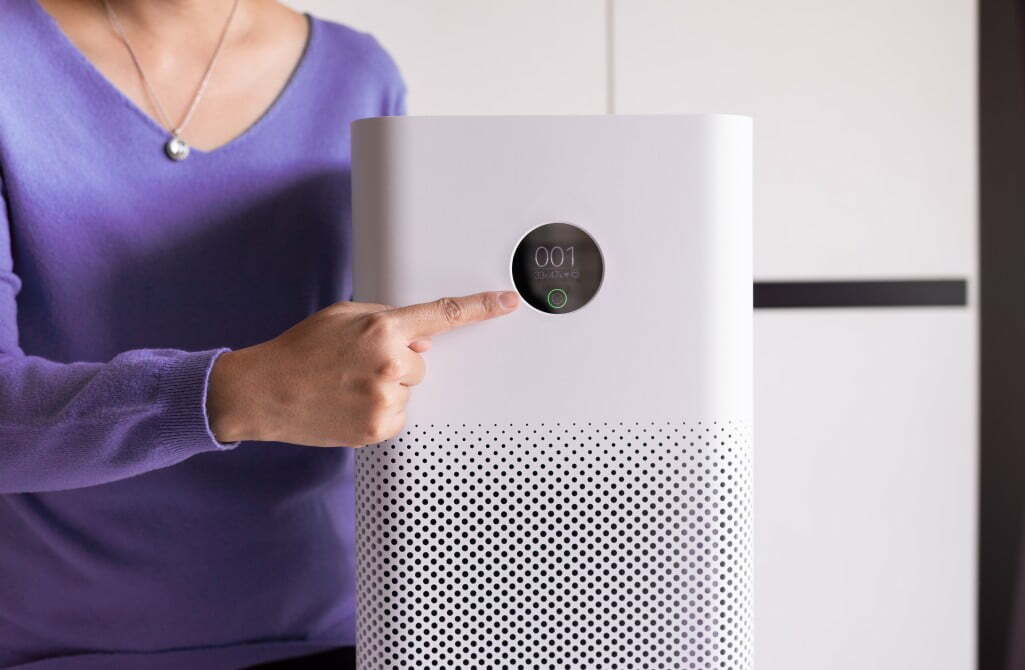
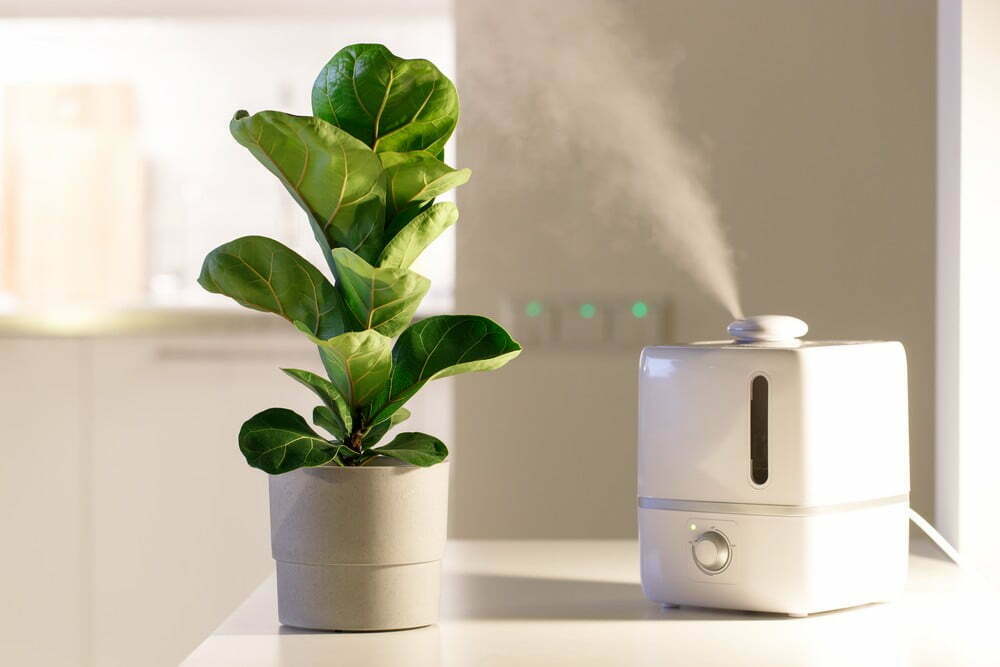


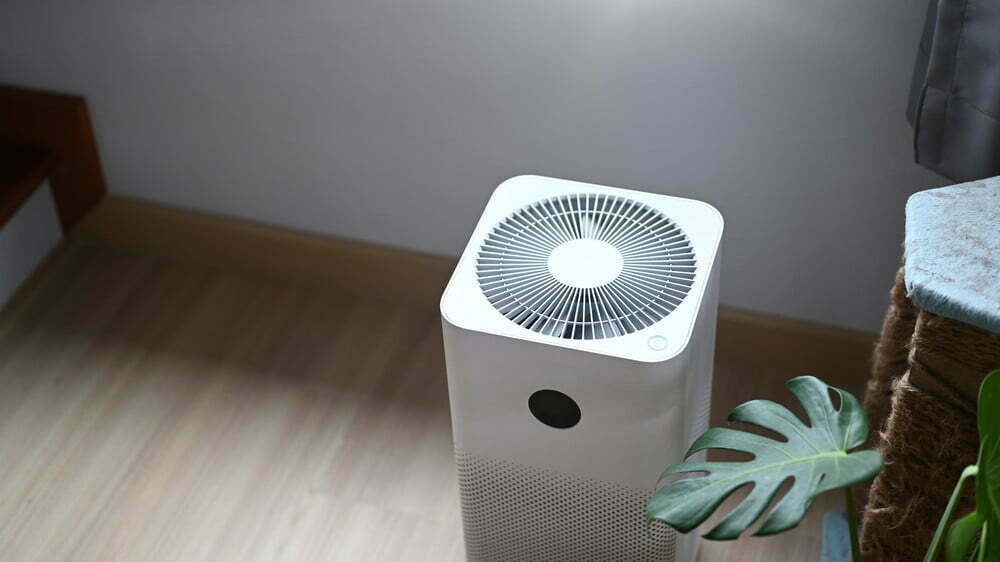
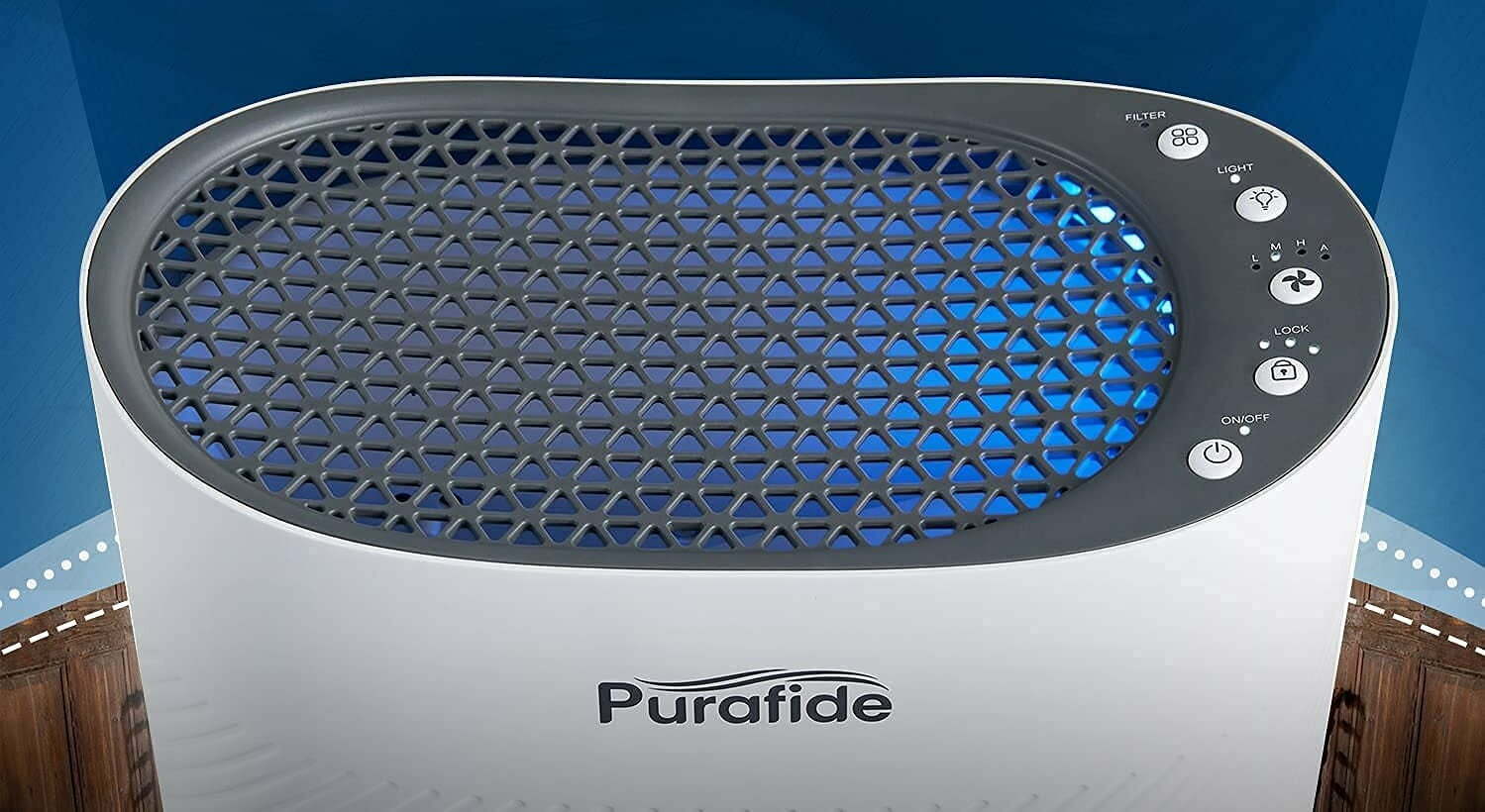
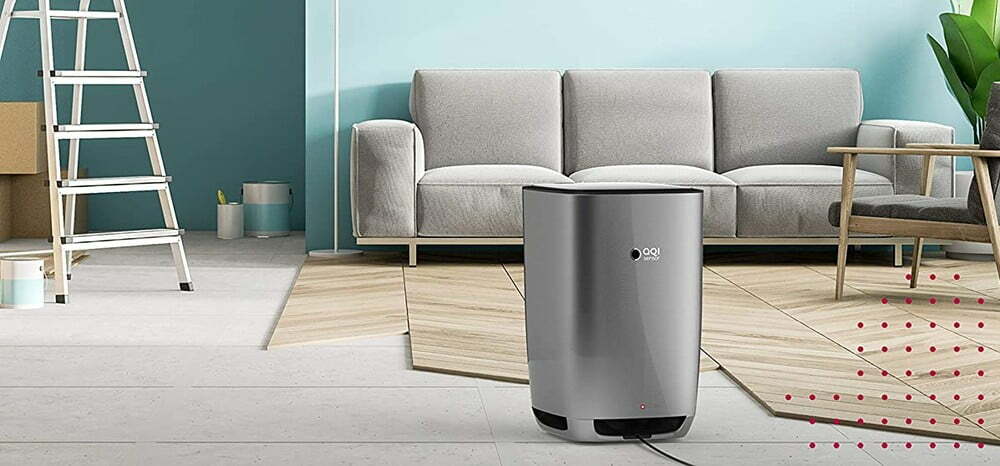
![Best Air Purifiers for VOCs and Formaldehyde in [year] 30 Best Air Purifiers for VOCs and Formaldehyde in 2026](https://www.gadgetreview.dev/wp-content/uploads/best-air-purifier-for-vocs-and-formaldehyde-image.jpg)
![Best Air Purifier in [year] ([month] Reviews) 31 Best Air Purifier in 2026 (January Reviews)](https://www.gadgetreview.dev/wp-content/uploads/Honeywell-True-HEPA-Allergen-Remover-HPA300-e1475603569442.jpg)
![Best Air Purifiers for Dust in [year] 32 Best Air Purifiers for Dust in 2026](https://www.gadgetreview.dev/wp-content/uploads/best-air-purifier-for-dust-image.jpg)
![Best Honeywell Air Purifiers in [year] 33 Best Honeywell Air Purifiers in 2026](https://www.gadgetreview.dev/wp-content/uploads/best-honeywell-air-purifier-image.jpg)
![Best Germicidal Air Purifiers in [year] 34 Best Germicidal Air Purifiers in 2026](https://www.gadgetreview.dev/wp-content/uploads/best-germicidal-air-purifier-image.jpg)
![Best Filterless Air Purifiers in [year] 35 Best Filterless Air Purifiers in 2026](https://www.gadgetreview.dev/wp-content/uploads/best-filterless-air-purifier-image.jpg)
![Best Levoit Air Purifiers in [year] 36 Best Levoit Air Purifiers in 2026](https://www.gadgetreview.dev/wp-content/uploads/best-levoit-air-purifier-image.jpg)
![Best Air Purifiers for Smoking Weed in [year] 37 Best Air Purifiers for Smoking Weed in 2026](https://www.gadgetreview.dev/wp-content/uploads/best-air-purifier-for-smoking-weed-image.jpg)
![Best Quiet Air Purifiers in [year] 38 Best Quiet Air Purifiers in 2026](https://www.gadgetreview.dev/wp-content/uploads/best-quiet-air-purifier-image.jpg)
![Best Desktop Air Purifiers in [year] 39 Best Desktop Air Purifiers in 2026](https://www.gadgetreview.dev/wp-content/uploads/best-desktop-air-purifier.jpg)
![Best Dyson Air Purifiers in [year] 40 Best Dyson Air Purifiers in 2026](https://www.gadgetreview.dev/wp-content/uploads/best-dyson-air-purifier.jpg)
![Best Air Purifiers for Dorm Room in [year] 41 Best Air Purifiers for Dorm Room in 2026](https://www.gadgetreview.dev/wp-content/uploads/air-purifier-for-dorm-room-1.jpg)
![Best Air Purifiers for Office in [year] 42 Best Air Purifiers for Office in 2026](https://www.gadgetreview.dev/wp-content/uploads/best-air-purifier-for-office.jpg)
![Best Air Purifiers for Basement in [year] 43 Best Air Purifiers for Basement in 2026](https://www.gadgetreview.dev/wp-content/uploads/best-air-purifier-for-basement.jpg)
![Best Air Purifiers For Odor in [year] 44 Best Air Purifiers For Odor in 2026](https://www.gadgetreview.dev/wp-content/uploads/best-air-purifier-odor.jpg)
![10 Best Personal Air Purifiers in [year] 45 10 Best Personal Air Purifiers in 2026](https://www.gadgetreview.dev/wp-content/uploads/best-personal-air-purifiers.jpg)
![10 Best Plug In Air Purifiers in [year] 46 10 Best Plug In Air Purifiers in 2026](https://www.gadgetreview.dev/wp-content/uploads/best-plug-in-air-purifier-image.jpg)
![10 Best Whole House Air Purifiers in [year] 47 10 Best Whole House Air Purifiers in 2026](https://www.gadgetreview.dev/wp-content/uploads/best-whole-house-air-purifier-image.jpg)
![10 Best Large Room Air Purifiers in [year] 48 10 Best Large Room Air Purifiers in 2026](https://www.gadgetreview.dev/wp-content/uploads/Coway-Airmega-200M-Large-Room-Air-Purifier-900x900-1.png)
![10 Best UV Air Purifiers in [year] 49 10 Best UV Air Purifiers in 2026](https://www.gadgetreview.dev/wp-content/uploads/best-uv-air-purifier.jpg)
